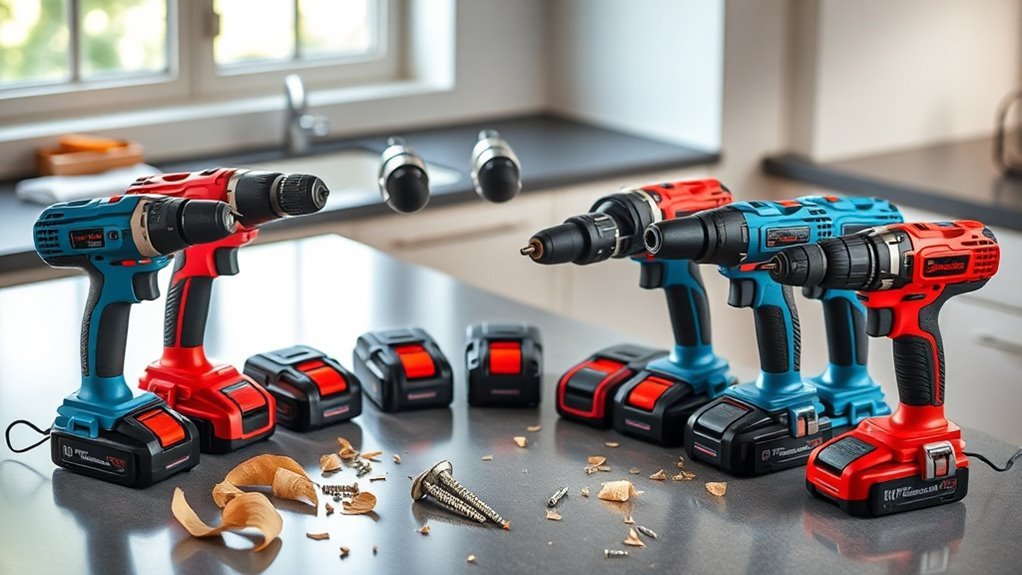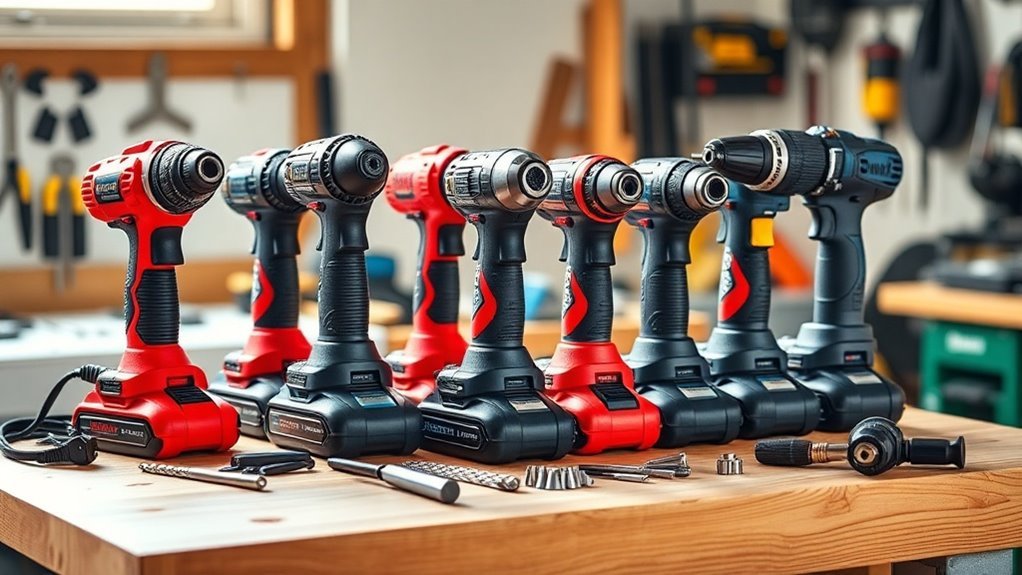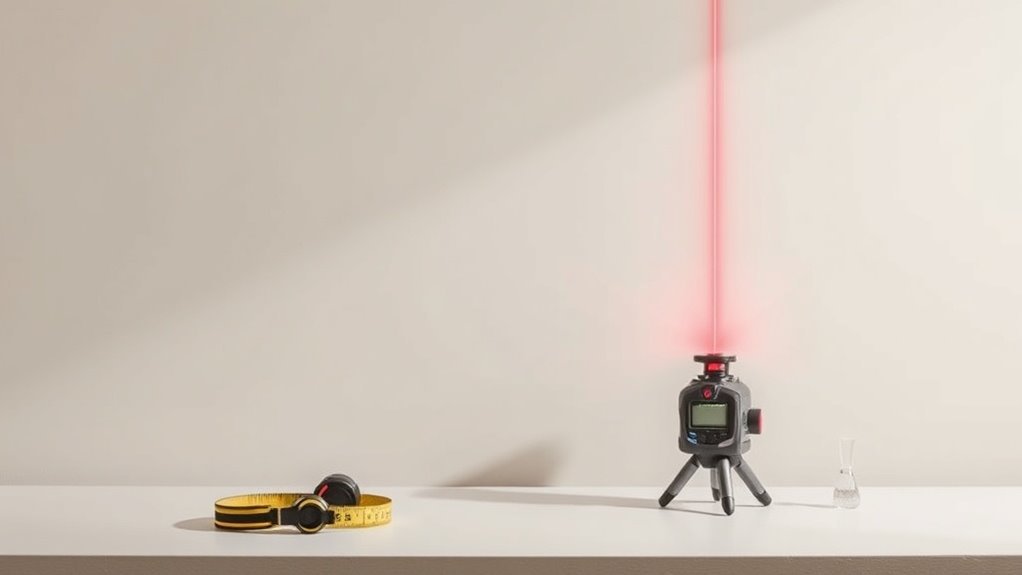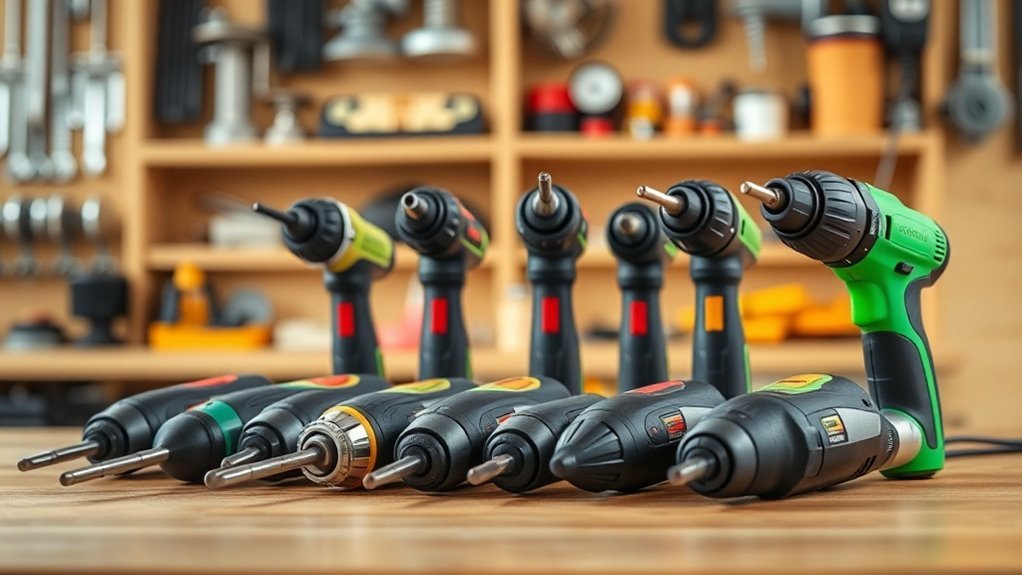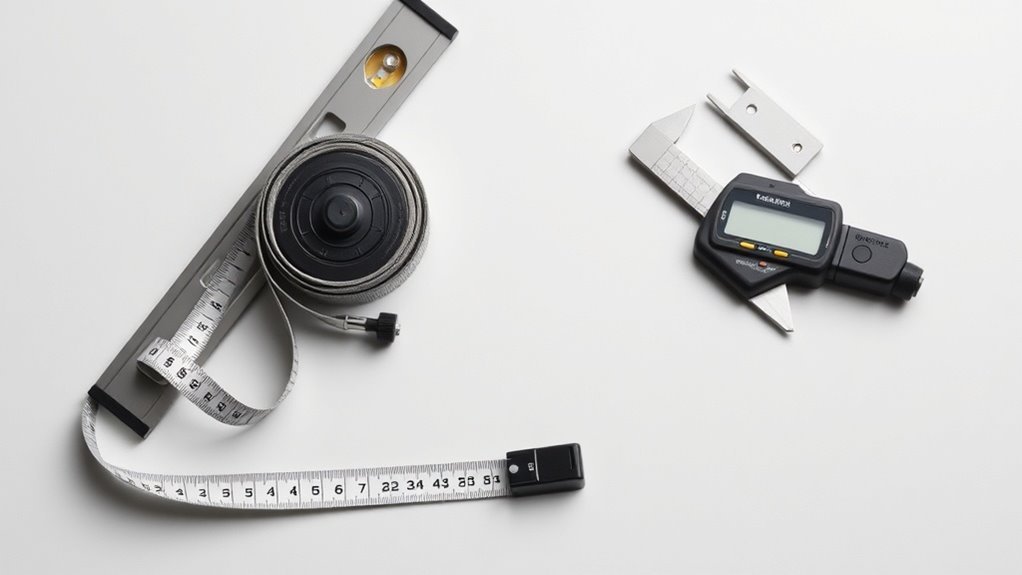Essential Tools for Mounting Shelves & Fixtures

To mount shelves and fixtures successfully, you’ll need a few essential tools. A power drill simplifies making holes and driving screws, while a stud finder helps you locate sturdy spots for secure mounting. A level guarantees your shelves are perfectly aligned. Don’t forget a measuring tape for precise measurements, and use the right wall anchors and screws to support your shelves properly. With these tools in hand, you’re set for a hassle-free installation. Learn more about optimizing your setup next!
Key Takeaways
- A power drill is essential for making holes and driving screws, with speed and torque features for flexibility.
- A stud finder helps locate proper support behind walls, preventing issues with mounting heavy items on drywall.
- A level ensures accurate alignment of shelves, enhancing their appearance and functionality when installed.
- Measuring tape is critical for precise measurements; always measure twice and mark spot placements clearly.
- Use appropriate wall anchors and screws tailored for the wall type to ensure stability and support of mounted items.
Power Drill: The Cornerstone of Your Toolkit
When it comes to mounting shelves, a power drill is your best friend.
It simplifies making holes in the wall and drives screws with ease, turning a tedious task into a breeze. You’ll want to choose a model that offers variable speeds and a good amount of torque, giving you flexibility for different materials. Having the right drill bits on hand is just as essential; they’ll help you tackle various wall types, from drywall to wood.
Remember to practice controlling the drill’s speed to avoid overdriving or damaging the surface. Additionally, consider whether you need a cordless drill for greater mobility or a corded drill for uninterrupted power. Finally, always wear safety goggles to protect your eyes from debris.
With a quality power drill in your toolkit, you’ll be well on your way to installing those beautiful shelves confidently.
Stud Finder: Ensuring a Secure Mount
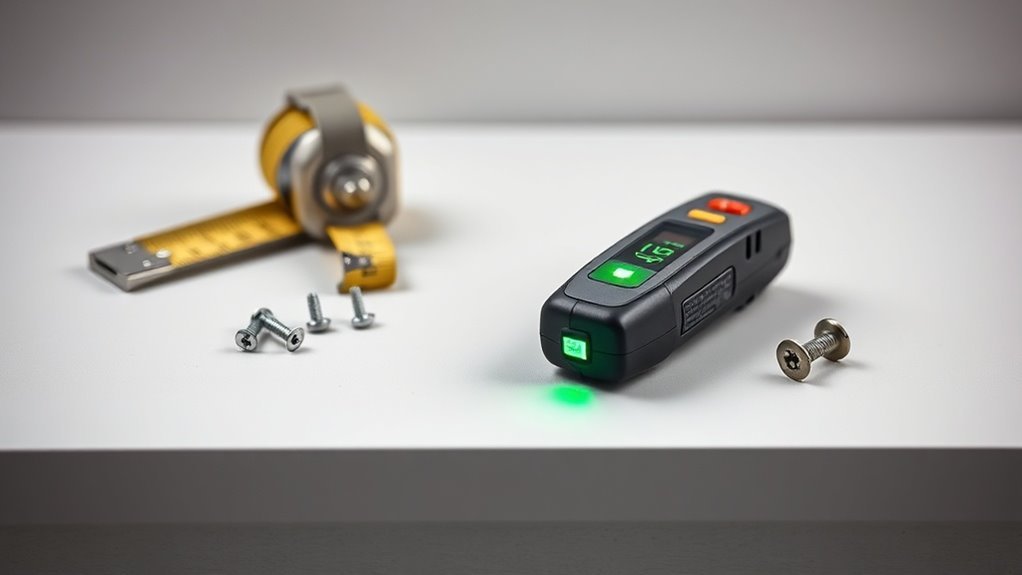
A power drill may get you started on the shelving project, but finding the right support is just as important. This is where a stud finder comes in handy. It helps you locate studs behind the wall, ensuring your shelves are securely mounted. Without this tool, you may end up anchoring your shelves to drywall alone, leading to potential disasters.
Additionally, knowing the weight limits of different wall anchors is crucial for selecting the right support for your shelves, as various types of wall anchors have specific applications that can affect the stability of your installation.
Consider these tips when using a stud finder:
Consider these essential tips for using a stud finder to ensure a secure and effective shelving installation.
- Choose the right type: Magnetic, electronic, or multi-functional options.
- Calibrate properly: Make sure to follow manufacturer guidelines for accuracy.
- Mark stud locations: Use a pencil to note where the studs are found.
- Test for hidden obstacles: Be aware of wires or pipes running through your walls.
With these steps, you’ll achieve a safe and sturdy mount!
Level: Achieving Perfect Alignment
Getting the perfect alignment for your shelves is essential to their overall appearance and functionality. Using a level simplifies this process considerably.
Once you’ve secured your brackets, place the level on top of the shelf to verify it’s straight. Adjust as needed to achieve that ideal horizontal line. If you’re mounting multiple shelves, it’s helpful to use the level to mark the height of each shelf consistently.
A slight tilt can make a big difference in how your shelves look and how well they can hold items. Remember, even the slightest misalignment can lead to awkward angles and unnecessary frustration. Taking the time to use a level will guarantee your shelves not only look great but also function as intended. Additionally, selecting the right type of laser level can enhance your accuracy and ease of use, making the alignment process even more efficient.
Measuring Tape: Precision Is Key
Since precise measurements are critical for successful shelf installation, having a measuring tape on hand is vital. This tool not only helps you guarantee your shelves are positioned perfectly but also saves you from making costly mistakes.
Here are a few tips to keep in mind when using a measuring tape:
- Double-check measurements: Always measure twice to avoid errors.
- Use the right units: Be consistent with inches or centimeters, depending on your project.
- Mark your spots: Use a pencil to mark where brackets or shelves will go to guarantee accuracy.
- Allow for clearance: Don’t forget to account for any items you plan to place on the shelves, guaranteeing there’s enough space.
In addition, using measuring tools like laser levels can greatly enhance your accuracy and efficiency during installation.
With your measuring tape, you’ll be set for a precise and hassle-free installation!
Wall Anchors and Screws: Stability and Support
While selecting the right wall anchors and screws may seem like a minor detail, they play an essential role in ensuring your shelves remain stable and secure.
Different wall types require specific anchors; for drywall, toggle bolts or molly bolts are great options due to their weight capacity. If you’re mounting on concrete or brick, concrete screws are your best bet.
Different wall types need specific anchors; toggle or molly bolts are ideal for drywall, while concrete screws work best on concrete or brick.
Always choose screws that match your anchors to provide a tight fit. Additionally, consider the weight of the items you’ll place on the shelves—heavier items need stronger support.
Take a moment to check if the screws and anchors are rated for that weight. A little prep can make a big difference, giving you confidence in your wall-mounted setup for years to come. Proper tool storage solutions can also enhance safety and organization in your workspace.
Questions
What Type of Wood Is Best for Shelves?
When choosing wood for shelves, you’ll want sturdy options like plywood, oak, or pine. These materials guarantee durability and can support weight effectively. Always consider your style and budget to find the best fit for you.
How Much Weight Can My Shelves Hold?
Your shelves can hold varying weights depending on materials and installation. Imagine a sturdy oak resting against a flimsy particle board; the former supports more. Always check weight ratings to guarantee safety and stability before loading.
Can I Install Shelves on Drywall?
Yes, you can install shelves on drywall. Just be sure to use appropriate anchors to support the weight. It’s important to find studs if you’re hanging heavy items for better stability and security.
What Tools Do I Need for Heavy Fixtures?
Imagine hanging a heavy mirror in your hallway. You’ll need a stud finder, drill, appropriate anchors, and a level. These tools guarantee stability, so your fixture stays securely mounted and looks great in your space.
How Do I Hide Shelf Mounting Hardware?
To hide shelf mounting hardware, use decorative brackets, fabric covers, or paint the hardware to match your wall. You can also choose floating shelves that conceal the mounting entirely for a cleaner appearance.
Conclusion
With the right tools in hand, you can tackle mounting shelves and fixtures like a pro. A power drill, stud finder, level, measuring tape, and sturdy wall anchors are your dream team for achieving a secure and aesthetically pleasing setup. Don’t cut corners; take the time to measure twice and drill once. By following these tips, you’re well on your way to transforming your space while ensuring everything stays in its rightful place. Happy mounting!

